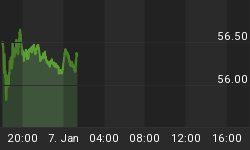Below is an excerpt from a commentary originally posted at www.speculative-investor.com on 11th March 2012.
Just when we think that Bernanke has exhausted his ability to come up with harebrained schemes to distort prices, he proves us wrong. Last week it was reported that the Fed was considering a new way of putting downward pressure on long-term interest rates. Why? Because as everyone knows, the US economy would be doing much better if interest rates weren't so darn high.
The new tactic would be a variation on the old tactic that goes by the name "operation twist". Under the old tactic, which the Fed began to implement during the second half of last year, the Fed sells short-dated debt securities from its stash and uses the proceeds to buy long-dated debt securities. This would tend to contract the yield-spread (flatten the yield curve) by pushing long-term interest rates downward and short-term interest rates upward, except that at the same time the Fed does whatever it needs to do to keep the official short-term interest rate near zero. The idea, then, is that the yield-spread contracts due to falling long-term interest rates.
The problem with the old tactic is that it is limited by the Fed's holdings of short-dated securities, which isn't good. After all, if the Fed and the government wanted limitations they would have stayed with the Gold Standard. One of the main purposes of the monetary system's current design is that there be no financial limitations on the extent to which intervention can occur. The new tactic under discussion would solve this problem.
Under the new tactic the Fed would have the ability to buy an UNLIMITED amount of long-dated debt securities using money created out of nothing. It would also have the ability -- so the story goes -- to eliminate the inflationary effects of this monetisation by issuing new short-dated debt securities. Putting it simply, the Fed would create new money to buy long-term bonds and then 'soak up' this new money by selling short-term bonds. The result is that long-term interest rates would be forced lower, provided that short-term rates continued to be pegged near zero. And the best part: there would be no inflationary effect! Or would there?
The reality is that there would be at least three inflationary effects.
One is due to money being injected into the economy at one point and withdrawn at a different point. This means that even if the Fed 'soaked up' the extra money as promised, the act of injecting and removing the money would distort relative prices.
A second inflationary effect stems from the fact that the money 'soaked up' by the Fed wouldn't disappear. It would, instead, be temporarily removed from the economy in exchange for short-term interest-bearing securities. In effect, the money would be parked in time deposits at the Fed. At some future time the owners of these deposits would want their money, at which point the Fed's original purchase of the long-dated securities would effectively become an outright debt monetisation (QE).
A third effect that also comes under the "inflationary" umbrella is that the creation of these new short-term deposits at the Fed would alter the private banking system's deposit structure. This is similar to the first effect, in that it wouldn't bring about an economy-wide loss of money purchasing power but it would distort relative prices. By way of explanation consider the hypothetical situation of Bill, a wealthy investor who has $100M invested on a short-term basis with an investment bank. Bill decides that he'd rather invest his $100M in the new short-term securities issued by the Fed, so he sells his existing investment. In this hypothetical example the Fed's policy has resulted in money being transferred from the buyer of Bill's investment to the Fed, and the transfer of money from the Fed to the seller of the long-term bonds purchased by the Fed. Who knows what the seller of the long-term bonds will do with the cash received from the Fed? The answer is that nobody knows. Maybe he will buy oil futures, thus boosting the cost of energy.
There are undoubtedly other effects, but you get the picture. Like all attempts by the central bank to manipulate money and interest rates, this new twist on "operation twist" will cause problems in addition to the most basic problem. The most basic problem is that the central bank shouldn't be making any attempt to force interest rates below where they would otherwise be.
Bernanke is like a kid with a new chemistry set who is gleefully mixing chemicals together without the slightest clue as to what the reaction will be. The difference is that whereas the kid with the chemistry set is probably going to do no worse than burn a hole in his parents' carpet, Bernanke's monetary experiments are burning holes in the US economy.
We aren't offering a free trial subscription at this time, but free samples of our work (excerpts from our regular commentaries) can be viewed at: http://www.speculative-investor.com/new/freesamples.html















